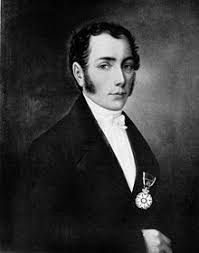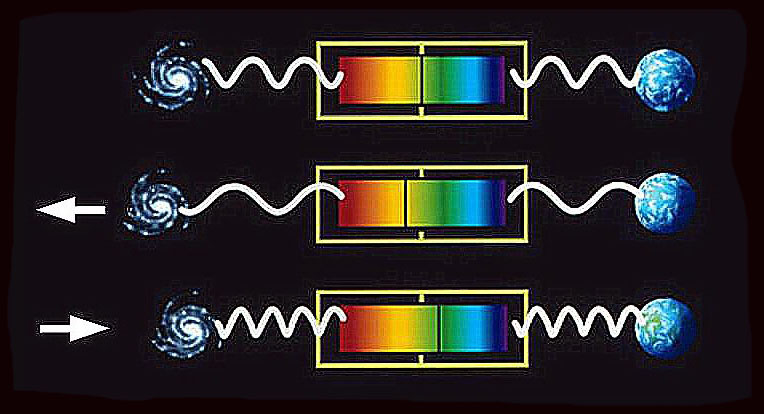
Joseph von Fraunhofer
1787-1826 = 39
Spectra Lines

Signatures of Atomic Vibrations

Emission / Absorption Spectrum
 Joseph von Fraunhofer 1787-1826 = 39 |
Spectra Lines
Signatures of Atomic Vibrations |
Emission / Absorption Spectrum |
Signatures of Atoms - All atoms vibrate because of nucleus rotation and orbiting electron energy. Their smallness enables them to vibrate very fast, which in turn, creates oscillating dark matter particle wave energy. If the oscillating and spin energy reaches into the light spectrum, light waves are produced. High energy vibrating atoms are now producing light. Because each atom has a specific nucleus Proton, Neutron, compliment, the spinning vibrations of the nucleus would be unique for each Element. Hydrogen has a slower vibration than Sodium and Sodium slower than Magnesium etc.
When the element's Quantum Ring Fields, are forced tighter together because of the compressing forces of Dark Energy, the fields slip past each other and displace electrons. The electrons in turn jump orbits, which causes a temporary anomaly in the atoms vibration. The atomic quantum stacked ring fields can move both ways, either tighter together, or further apart, depending on the environment. (b) An increase in compression of quantum fields creates Absorption Lines, a decrease in compression of these fields creates Emission Lines. Absorption / Emission Lines are also produced by interrupting atomic vibrations, because of electrons jumping orbits. Now for the kicker, the individual colors and their spectra lines are not polarized magnetic waves, they are, pressure waves in the Medium of Dark Matter. One more prediction of TLU. * It is not the Electron that emits or absorbs photon energy when jumping orbits. This concept is discarded in the Grand Unified Theory. This is because it stems from a misunderstanding of the atoms construction. It was assumed that the atomic nucleus was surrounded by empty space. It is not, it is surrounded by physical dark matter quantum fields. So the conclusion, it is the whole vibrating atomic system that gets interrupted with energy changes, and creates Spectra Lines, not the Conceptual Photons.
|
Shifted Spectra Lines a - Local light speed - there is a speed change between observed objects but it is very very tiny. b - Slowing light speed as you increase your distance from an observed object. c - Faster light speed as you decrease your distance between an observed object. |
a b c |
 |
This graphic represents the vibrating frequency of atomic elements and the established speed of light in our solar system. (present local light speed, 299,792,458 meters per second).
Because Light is a wave and is traveling in a medium, it is subject to the same laws that apply to Radar and Sound Waves. Doppler shifting is quite complex because of movement, especially when the medium is increasing or decreasing in density. The vibrating atoms that produce a specific spectrum of colored light, in relativity to other atoms, in the same body, is a constant, but, the spectrum itself is subject to the movement and density of the medium, or, the observer. In other words the light spectrum that we all see can be shifted thru, or, out of our sight. This works both ways, either more red shifted, (slowing light speed) or Blue shifted, (faster light speed). (b) The absorption and emission lines of the spectra are unique for each element and don't change. All this means, we can now determine the local and distant speed of light using the absorption emission lines as a standard, but, don't forget to include that parts of the whole Cosmos expand and contract differently. This is because light speed is not, and can not be the same throughout the Multiverse.
|
Regional Expansion Created by a Black Star Supernova (BSS) |
 Encyclopedia 7.0 - f - has more information |
The Dark Matter of space is composed of individual, spherical, Primal Matter at around 10 to the -30. This makes space appear to be a vacuum but it is not. (b) Light from distant Galaxy's has been traveling longer, therefore has a larger redshift, but, you must also include the decreasing speed of light before you can calculate any relative distance. (c) And finally, the expansion of a Universal Medium is caused by Universal Particles inflating, losing energy, and creating more Mass in the extreme cold. This is an Anti-Gravity event and is not to be confused with Dark Energy. The inflation will continue until a point is reached where there is no more compressed spin energy created by the Supernova event of a Black Star. Universal Particles in outer parts of the Universe / Multiverse have lost their Torus Chaining, which in turn causes them to degrade into Primal Sand / Space. No more polarized spatial force, and the distance between all remaining particle grains increases to its final DMI. There still is spatial force but it is weak. This is because the tiny particles can still vibrate, move and bump into each other thus producing a small force, BUT, space is bigger. This is because the individual Primal Matter Grains are no longer grouped together and spinning. TLU calls this new and old part of the Universe / Multiverse, Primal Space or Dark Matter Space. (don't forget, Matter can not be created or destroyed, but, a spatial force can).
TLU - Now for something very profound - If Space were a true medium of Nothing, or a Void, or a Vacuum, light waves are not possible, but, if space is a medium of Polarized Dark Matter Particles, faster slower light and wave speeds are a certainty. Light waves are no different than sound or magnetic ones. This is because at the very basic level they rely on tiny spinning particles, plus a spatial magnetic force to pass on their pulling pushing power.
Final analysis of Space - The medium of space is a material and magnetic phenomena. Vast Expanses of polarized space in a Multiverse, are called Dark Matter Seas. On the other hand, the vast expanses of Primal Space has no Universal Particles so it is non-polarized, and is called Primal Space. Both Primal and Dark Matter space exists up to a point then stops, then there is nothing, and there is no such thing as the Vast Expanse of Nothing. Nothing has no height width or depth, it is, the end of existence... I know you're going to ask, what is at the end of space? TLU - That is a nonsense question. It's like saying, what's at the end of existence.
|
|
|
|
(e-mail) - tluknower@gmail.com (original site) - http://logicaluniverse.com (flagship site) - http://unified-theory.org |
(UT) - Welcome Video - YouTube (LU) - Welcome Video - YouTube (Social Network Posts) - Blue Sky |